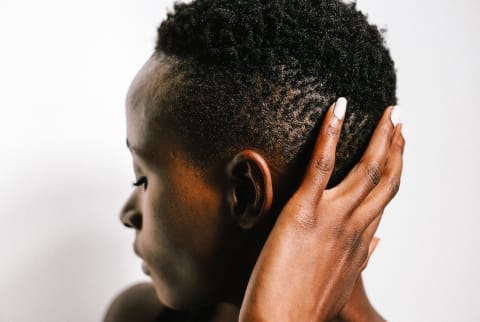If the latter has been bothering you as of late, keep reading—we have the perfect first step for a dry, flaky scalp that’s all-natural, DIY-friendly, and only takes a few minutes. “Dandruff flakes tend to be large, individual scale-like flakes on the scalp or base of the hair,” board-certified dermatologist Joshua Zeichner, M.D., once told us about how to I.D. your flakes. Dandruff flakes can also be yellowish, while those that come with a dry scalp tend to be more white. If you think you might have dandruff, check out this story for more expert guidance on how to treat it, as the regimen you’ll need is very different from that for a dry scalp. You don’t need to add any other ingredients to the mask—in fact, the simpler the better, as certified trichologist and celebrity stylist Shab Reslan previously told mbg. You can pour the aloe into a squirt bottle if that makes it easier for application, or you can use your hands. Really work the aloe vera into the scalp via a gentle scalp massage. Remember, use your fingertips, not your nails. Let the mask sit for 20 minutes before rinsing it out, then follow your normal hair-wash routine. If you want to dive deeper into the benefits of aloe scalp masks—check out our full guide. One way to do so is by including a hyaluronic acid supplement in your daily routine; ideally, you would consume one daily, but it’s a great time to snag one during colder months when your skin or scalp begins to feel dry. Major bonus: HA supplements have even been shown to ease joint pain and stiffness1, another cold-weather downside for many. If you’re ready to shop, we curated a list of the 13 best hyaluronic acid supplements to make your hunt a tad easier.



